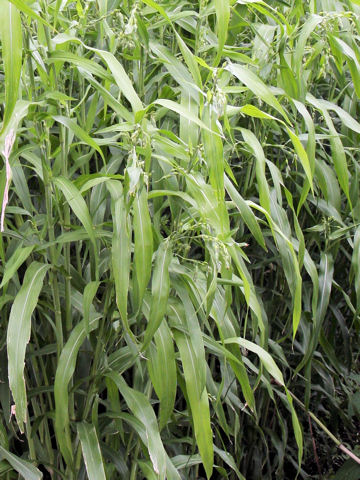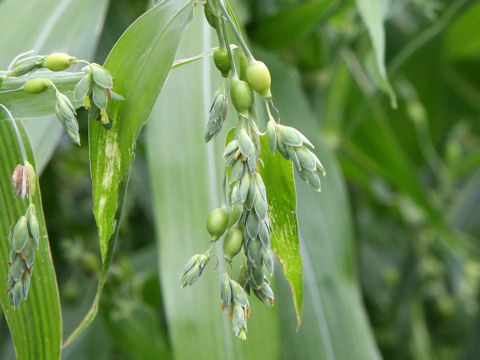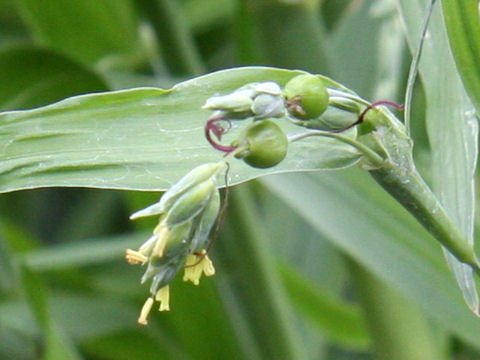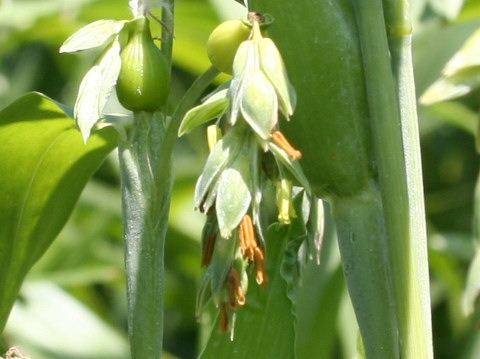 |










|

|
インドまたは東南アジアが原産だと考えられています。わが国へは江戸時代の中頃に中国から渡来しました。「じゅずだま(Coix lacryma-jobi)」の変種です。茎は直立し、高さは1~1.5メートルになります。葉は狭披針形で互生します。8月から10月ごろ、葉腋から穂状花序をだし花を咲かせます。果実は楕円形で茶褐色に熟し、種子は食用にされるほかハトムギ茶や焼酎の原料になります。C4植物(C4型光合成を行う植物)です。
|

|
イネ科ジュズダマ属の一年草で、学名は Coix ma-yuen。英名は Large-fruited adlay、Edible adlay。
|

|
The Large-fruited adlay (Coix ma-yuen) belongs to Poaceae (the Grass family). It is thought to be native to India or Southeast Asia. It was introduced into Japan via China in the middle days of Edo Era (1603-1868). This herb is a variety of Job's tears (Coix lacryma-jobi). The stem is erect and can reach 1-1.5 m in height. The leaves are narrow-lanceolate and arranged in alternate. The spikes are borne on the axils, and the flowers bloom from August to October. The fruits are elliptic and ripen in brownish-red. The seeds are edible and used as a incredient of adlay tea or distilled spirit. It is a C4 plant (Plants with C4-type photosynthesis).
|

|
[上・中1~2] 東京都小平市「都薬用植物園」にて、2009年08月09日撮影。
[中3・下] 長野県南箕輪村「信州大学農学部」にて、2005年08月29日撮影。
|






